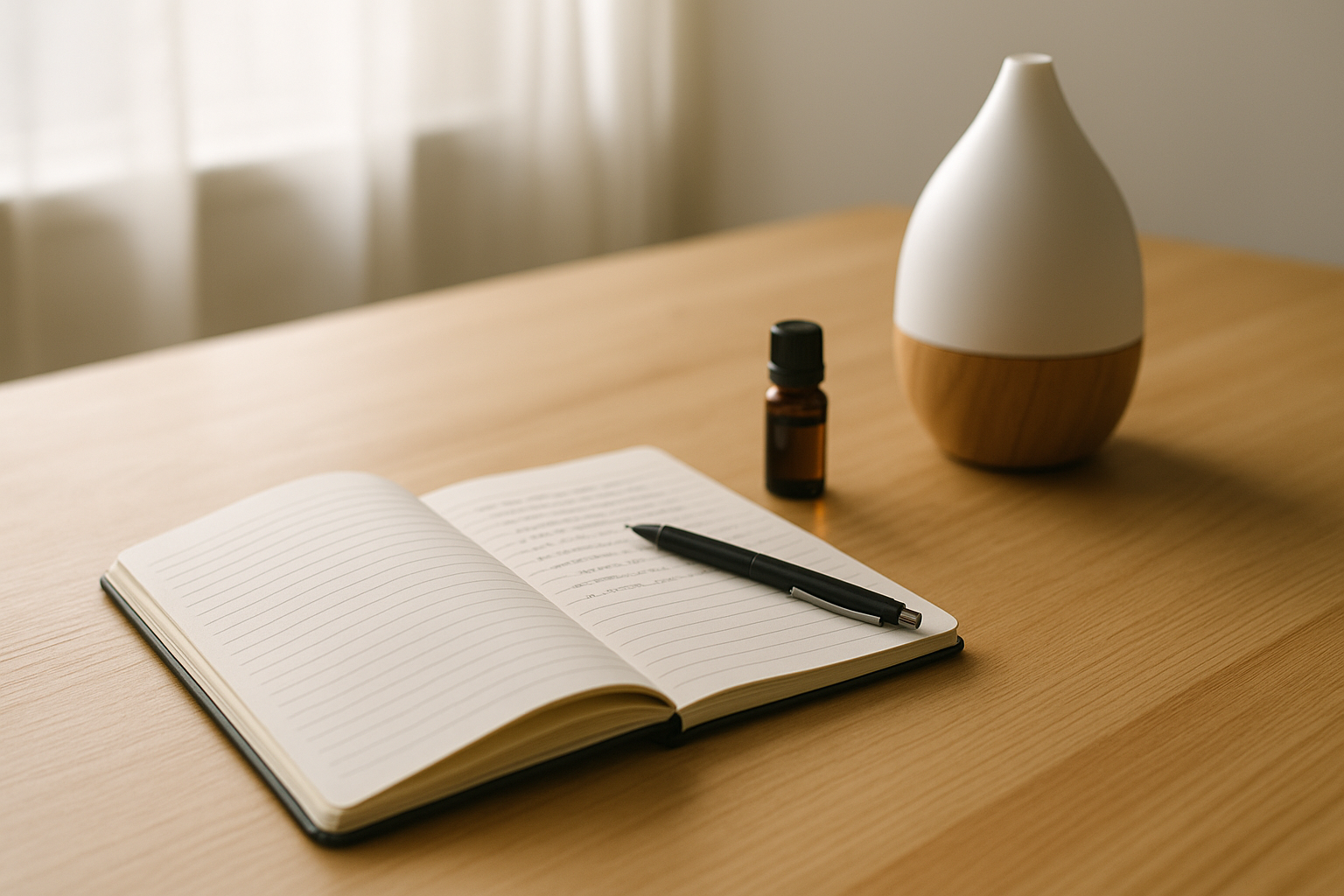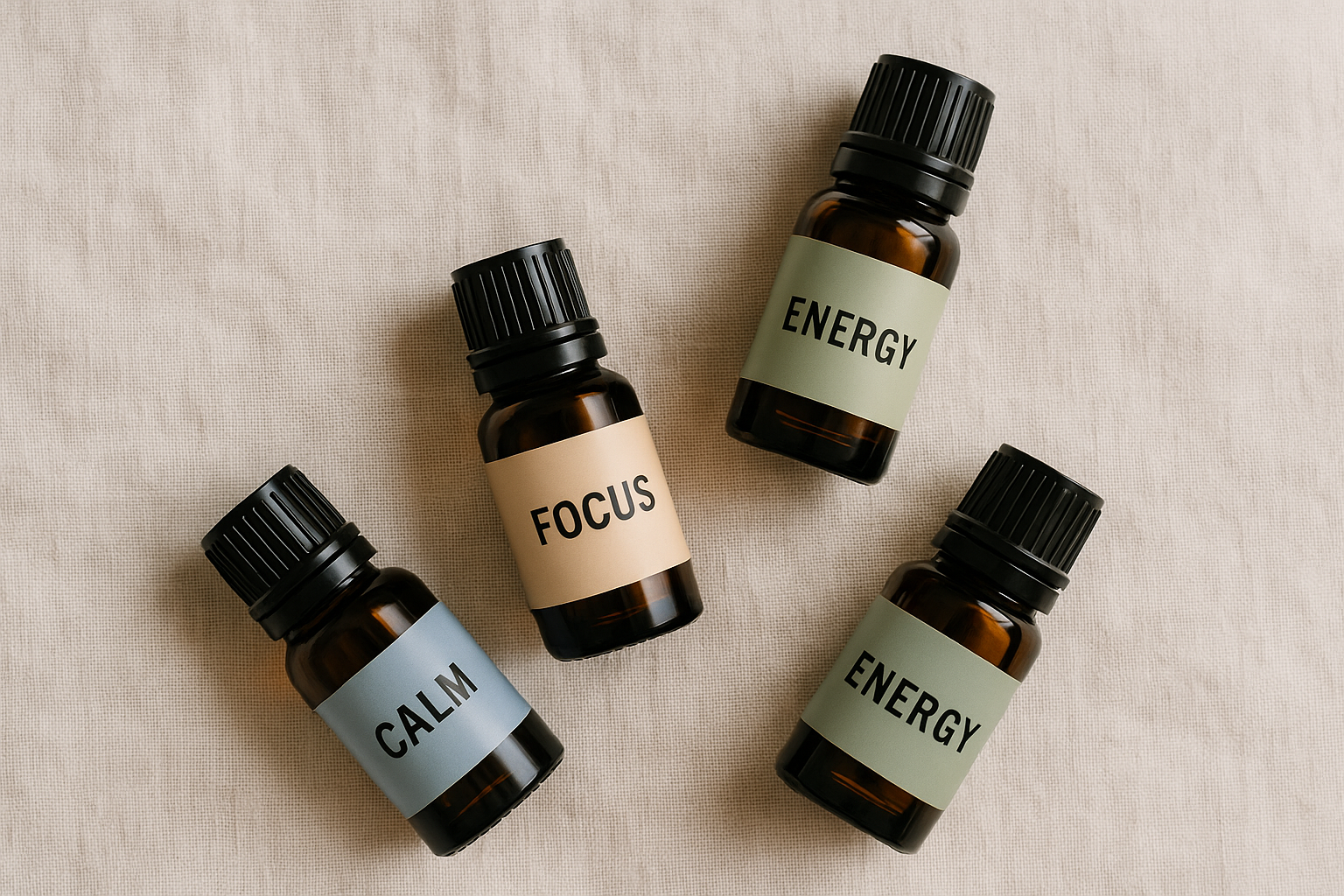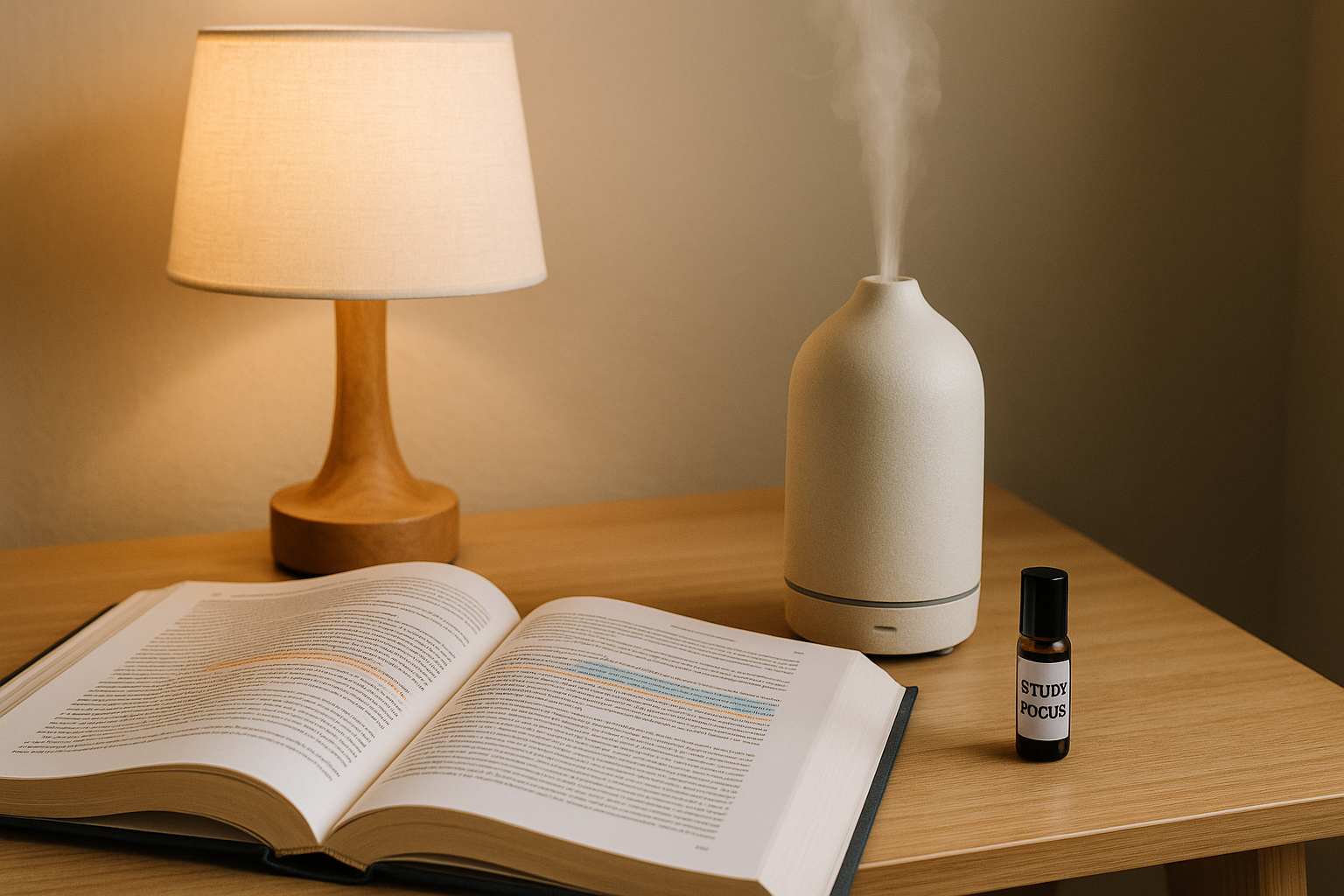
A Smell to Remember: Using Aromas to Anchor New Habits & Study Sessions
We all know the power of scent—how a whiff of sunscreen can transport us to summer vacation or how a certain perfume can conjure someone we haven’t seen in years.
But what if we could consciously use that power?
In this post, we’ll explore how to use aromatic anchoring to lock in focus, build consistency, and supercharge your learning or habit-forming efforts—using nothing more than essential oils and a little intention.
The Science Behind Scent and Memory
Scent is the only one of our five senses that travels directly to the limbic system, the brain’s emotional and memory center. That’s why smells can trigger memories more vividly than sights or sounds.
In psychology, anchoring refers to the process of pairing a neutral stimulus (like a smell) with a specific state of mind or behavior. Over time, that scent can re-evoke the mental state it was paired with—creating a shortcut into focus, calm, or motivation.
Athletes use this. Performers use this. And now? You can too.
How to Use Scent to Anchor a Habit
Whether you’re building a journaling practice, a new workout routine, or trying to study more effectively, scent-based anchoring can help. Here’s how to do it step by step.
1. Pick the Habit You Want to Anchor
Habit formation can be broken down into three stages: cue, routine, and reward. Scent acts as the cue that triggers the routine (the habit) and sets you up for the reward (the feeling of accomplishment).
Start small. Choose something that happens regularly, like:
- Studying or doing homework
- Meditating or journaling
- Morning stretching
- Preparing for a presentation or test
The more consistent the habit, the stronger the anchor becomes.
2. Choose Your Signature Scent

Pick a scent you don’t already associate with anything else. This will help form a clean association (the “anchor”) and prevent confusion with other memories.
| Mood/Intention | Essential Oil Suggestions |
|---|---|
| Focus & Clarity | Peppermint, Rosemary, Eucalyptus |
| Calm & Centered | Frankincense, Vetiver, Lavender |
| Motivation & Energy | Grapefruit, Lemon, Spearmint |
Avoid blends or heavily perfumed oils at first—simplicity builds stronger anchors.
3. Introduce the Scent During the Habit
Each time you do the habit, incorporate the scent:
- Inhale deeply from the bottle
- Use a rollerball on pulse points
- Diffuse in your workspace
- Add a drop to a cotton ball on your desk
The goal is to consistently pair the smell with the action. Try not to use that scent during other activities, as it can dilute the association. Keep it exclusive to the habit you’re anchoring.
4. Repeat for at Least 7–10 Sessions
The more consistently you do this, the more strongly your brain will associate the scent with the mental state or task. You’ll eventually find that the aroma itself begins to trigger the desired behavior or mindset.
Anchoring for Habit Change
Trying to meditate every morning? Start each session with lavender or frankincense. After a few weeks, the scent will begin to draw you into that headspace automatically.
Building a bedtime routine? Use a calming oil like Roman chamomile each night as you dim the lights, put away your phone, or journal. Eventually, the scent becomes a cue: “It’s time to wind down.”
This works because it removes decision fatigue. You’re replacing willpower with ritual—and scent is the ritual’s signal.
Tips for Success
Need help making this stick? Here are some pro tips:
- Keep the scent exclusive: Don’t use it in unrelated situations until your habit is fully anchored.
- Use the same delivery method: If you start with a roller, keep using it. Changing forms can dilute the anchor.
- Stack with other cues: Combine aroma with music, lighting, or a specific location for stronger reinforcement.
- Journal the shift: Take note of when the scent starts to feel automatic or helpful. That’s your cue it’s working.
Example: Anchoring for Study Sessions

Want to boost focus and recall? Scent can help. Aromatherapy can enhance your study sessions by creating a mental anchor for concentration, memory, and calm.
Create a “Study Blend”
Try this in a diffuser or personal inhaler:
- 2 drops rosemary (clarity)
- 1 drop peppermint (alertness)
- 1 drop cedarwood (grounding)
Diffuse during every study session—then add the scent subtly (roller or diffuser necklace) during a test or presentation. You’ll be triggering the same brain state you had while studying.
When It Might Not Work (and What to Do)
Scent anchoring isn’t magic—it’s memory. If you’re:
- Inconsistently using the scent
- Trying to anchor too many habits at once
- Choosing a scent that’s already emotionally “loaded”
…you might not get the full effect. Try again with a new oil, a tighter routine, or a more focused habit.
And be patient. Neural pathways are built through repetition and consistency, not constant change.
Final Thoughts: Ritual Over Routine
Anchoring with scent isn’t about hacking your brain—it’s about honoring the body’s quiet language. Aromas speak in emotion, not logic. When you train your body to associate a smell with calm, focus, or presence, you’re creating a ritual.
And rituals are resilient.
When the world is noisy and your schedule’s a mess, that little bottle becomes more than a smell. It becomes a signal: I’ve been here before. I can do this again.